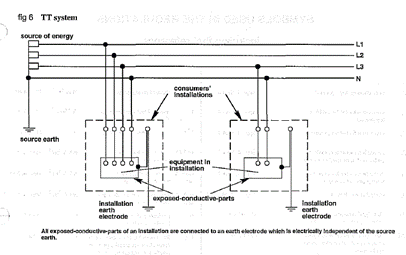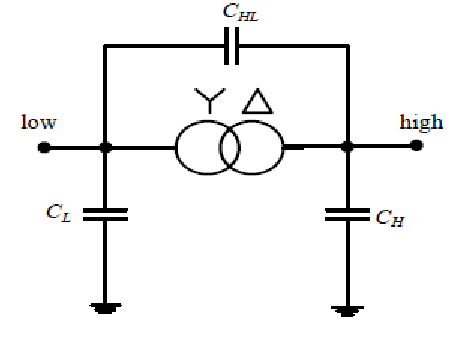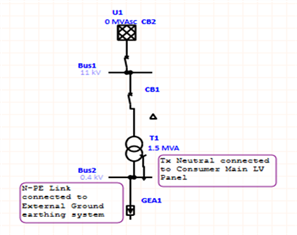In one of the new project, the neutral of the transformer (star point) is directly connected to the main distribution panel board's neutral bar. Instead of connecting the transformer neutral directly to the ground earth electrode, this neutral bar is linked to the earth bar of the same LV Panel and then the earth bar is connected to the external earth electrode. The transformer neutral must be solidly earthed, per BS 7671.
Leakage current was discovered in the distribution system's earth line during testing and comissioning. Thank you for any and all explations regarding the possibility of the leakage current in the ground cables.


